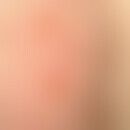Synonym(s)
Bloodletting white; White bloodletting
DefinitionThis section has been translated automatically.
Plaster coated with cantharide ointment as the main active ingredient and used to create skin blisters (blistering). Cantharidine is obtained from the Spanish fly, a ground beetle species (Lytta vesicatoria Fabricius). The active ingredient leads to a burning of the treated skin with blistering. The mechanism of action is similar to cupping therapy.
Pharmacodynamics (Effect)This section has been translated automatically.
Second-degree burns. Withdrawal of lymph fluid from the tissue, similar to lymph drainage. Reactive hyperemia, increasing rheology. An activation of immunocompetent cells is postulated.
Cave! The authors are cautious about this therapy method!
You might also be interested in
IndicationThis section has been translated automatically.
Degenerative disorders of the musculoskeletal system, especially spinal disorders, shoulder-arm syndrome, intercostal neuralgia, tumor pain in isolated bone metastases, postzoster neuralgia. Also rarely used to treat psoriasis, atopic eczema and other chronic eczema. Also used for gouty tophi.
Dosage and method of useThis section has been translated automatically.
Apply cantharide patches from the pharmacy in the morning on the corresponding localisations ( cupping zones). Max. Plaster size should not exceed 5 × 10 cm. Change dressing after 12-16 hours. Prick the bladder sterilely and draw off liquid. If the bladder is clean, the roof of the bladder remains intact, in case of infection remove. Change dressing daily until weeping subsides.
Notice! The patient should be informed about the burning to aching sensation, possibly it can also come to burning when urinating. Nephrotoxic effect of cantharidine!
ContraindicationThis section has been translated automatically.
Cystitis, pyelonephritis, in loco in acute arthritis, open wounds.
Note(s)This section has been translated automatically.
Do not use in the mucous membrane area or on persons with a tendency to hyperpigmentation.




